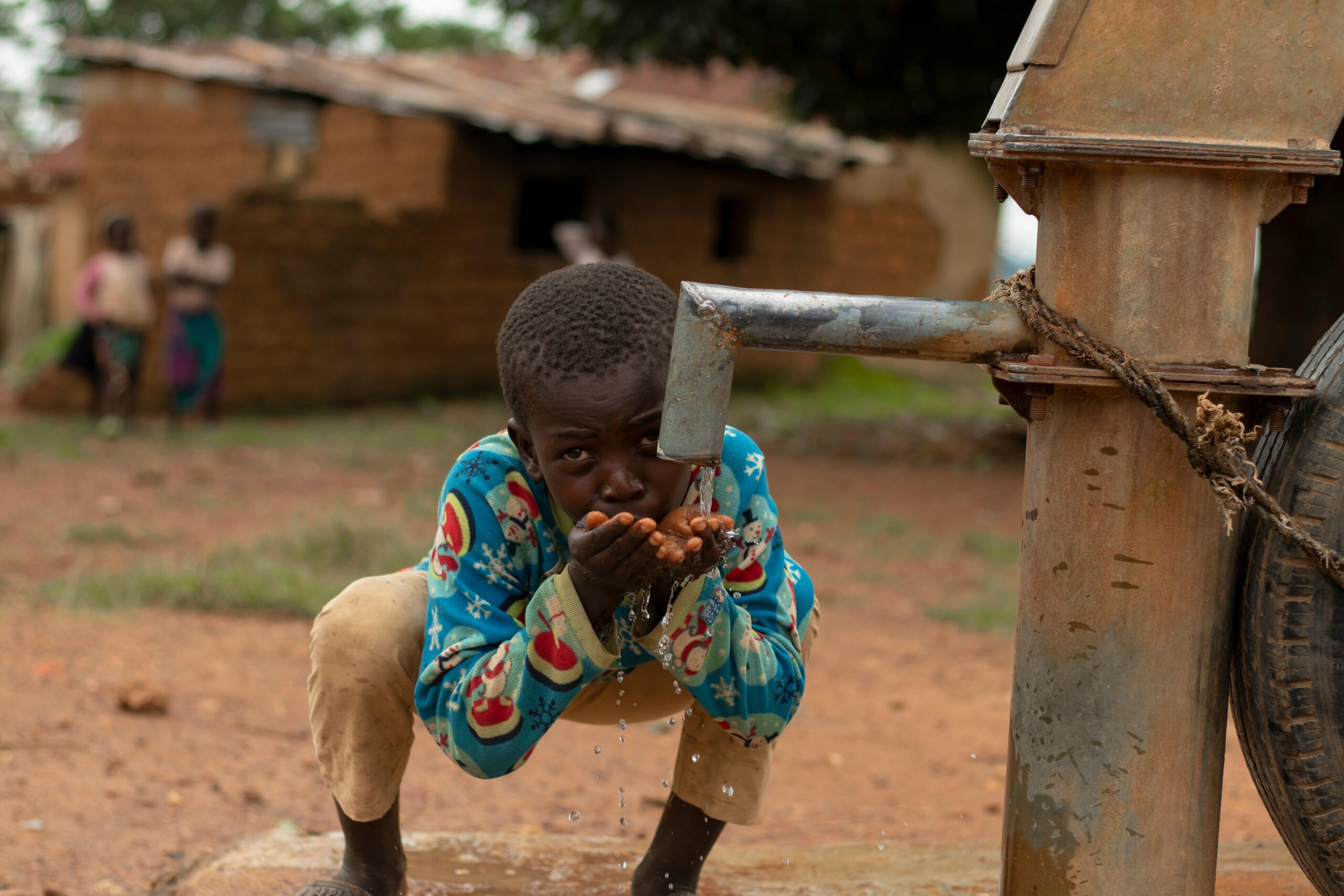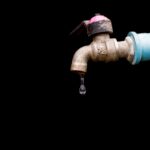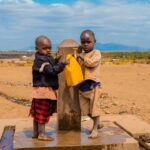Water Rights and Human Rights: A Balancing Act

Water is a vital resource for life, but access to it isn’t equal everywhere. The idea of water rights comes from the belief that everyone should have fair access to clean water. This ties closely to human rights, which emphasize the dignity and well-being of every person. Unfortunately, many communities still face water shortages, while others deal with polluted or unsafe water. These issues often highlight deeper challenges like poverty, inequality, and poor governance. Addressing water rights and human rights together can help create fair and lasting solutions.
The Global Water Crisis: Challenges and Inequalities
Around the world, billions of people don’t have reliable access to clean water. This problem is worse in areas with scarce water supplies or where infrastructure is underdeveloped. Climate change is making the situation harder, with droughts and unpredictable weather affecting water availability. Wealthier areas often manage to secure water resources, while poorer regions are left behind. Women and children in many communities spend hours fetching water instead of attending school or working. These inequalities show the urgent need for global cooperation to improve water access for everyone.
Legal Frameworks for Protecting Water Rights
Strong legal frameworks are essential for ensuring water rights are upheld and disputes are resolved fairly. Laws that clearly define access, usage, and conservation responsibilities help prevent conflicts and promote equitable sharing of resources. For example, countries with water allocation laws often see fewer disputes between farmers and urban users during periods of drought.
International agreements, like the UN’s recognition of access to clean water as a human right, provide a foundation for countries to build their water policies. At the local level, laws that prioritize vulnerable populations, such as rural communities or those in poverty, ensure that resources reach those who need them most.
However, enforcement remains a challenge in many regions. Corruption, limited resources, or weak institutions can undermine the effectiveness of these laws. Addressing these gaps requires transparency, accountability, and community involvement to ensure legal protections translate into real-world access to clean water.
Water as a Public Good vs. Economic Commodity
One major debate is whether water should be treated as a basic right or a product for sale. Treating water as a public good means it’s available to everyone, regardless of their ability to pay. On the other hand, treating water as a commodity allows private companies to manage and distribute it, often leading to better infrastructure but higher costs. Striking a balance between these approaches is difficult. Privatization has helped in some places but failed in others, often sparking protests from communities that can no longer afford water.
The Role of Governments in Balancing Water Rights
Governments play a crucial role in ensuring fair access to water. They set policies that determine who gets water and at what cost. In many countries, governments are responsible for building and maintaining water infrastructure, such as pipes and treatment plants. However, corruption, mismanagement, or lack of resources often hinder progress. Strong governance requires clear laws, transparency, and enforcement mechanisms to prevent exploitation and ensure that water remains accessible to all. Governments must also listen to local communities and consider their needs when making water-related decisions.
Community-Driven Water Management
Local communities are key players in managing water resources effectively. When given the tools and authority, they can make decisions that reflect their unique needs and challenges. For example, community water committees often oversee local distribution, ensuring fairness and accountability. These grassroots efforts also promote sustainability by encouraging practices like rainwater harvesting and conservation. However, community-led management needs support from governments or NGOs to provide funding, technical training, and conflict resolution mechanisms. A combined approach of local and national efforts can yield better results.
Corporate Responsibility and Water Rights
Companies that use large amounts of water, such as those in agriculture, beverage production, and mining, have a responsibility to consider their impact on local water supplies. When businesses overuse or pollute water, they can harm nearby communities and ecosystems. Increasingly, companies are being called upon to adopt sustainable practices, such as reducing water waste and treating wastewater before releasing it back into the environment. Some corporations are also investing in community water projects as part of their corporate social responsibility initiatives. Balancing profit with the well-being of people and the planet is critical for maintaining water rights.
The Impact of Climate Change on Water Access
Climate change is reshaping the availability and distribution of water worldwide. Rising temperatures and shifting rainfall patterns have led to more droughts, floods, and water scarcity in many regions. Melting glaciers and shrinking rivers are reducing water supplies for millions of people. These changes often worsen existing inequalities, hitting vulnerable populations the hardest. Governments and communities must adapt by building resilient water systems, such as storing rainwater or creating drought-resistant crops. Tackling climate change and improving water access must go hand in hand to ensure long-term solutions.
International Law and Water Rights
Water does not follow borders, and many rivers, lakes, and underground reservoirs are shared by multiple countries. International laws and agreements aim to prevent conflicts over these shared resources. Treaties like the United Nations Watercourses Convention provide frameworks for cooperation, ensuring countries share water fairly and sustainably. However, enforcing these agreements can be challenging, especially when countries prioritize their own needs over regional stability. Collaboration, negotiation, and trust-building are essential to manage shared water resources effectively and avoid disputes that could escalate into larger conflicts.
Education and Awareness for Water Rights
Education plays a powerful role in solving water challenges. When people know their rights to water, they are better equipped to demand fair treatment and stand against injustice. For example, a community that understands laws about clean water can push for better policies or report illegal dumping into water sources.
Schools, NGOs, and local leaders can teach the importance of water conservation and sustainable use. Programs that educate farmers on efficient irrigation methods, for instance, can save water and boost crop production. Similarly, when children learn about water safety and hygiene in school, they bring that knowledge home, improving the health of entire families.
Raising awareness also helps reduce harmful practices like wasting water or polluting rivers and lakes. By spreading knowledge, communities can create long-term solutions to water challenges while protecting this vital resource for future generations.
Addressing Gender Inequalities in Water Access
In many regions, women and girls are primarily responsible for collecting water, a task that often takes hours every day. This burden leaves little time for school, work, or other opportunities. As a result, gender inequality worsens, and communities miss out on the potential contributions of women and girls.
Addressing this issue requires practical solutions, like building wells and taps closer to homes. It’s also important to involve women in planning and managing water projects, as they understand the unique challenges they face. For instance, in places where women have a say in water committees, services are often more effective and sustainable.
By reducing the time and effort needed to fetch water, women and girls can focus on education, careers, and other aspects of their lives. This not only improves their well-being but also strengthens entire communities by unlocking their potential.
The Role of Indigenous Knowledge in Water Management
Indigenous communities have long relied on their knowledge of local ecosystems to manage water sustainably. Their traditional practices often emphasize harmony with nature, ensuring that water resources are not overused or polluted. For instance, some indigenous groups use natural markers like plant growth or seasonal changes to determine the best times for irrigation, fishing, or water collection.
Integrating indigenous knowledge with modern water management strategies can offer practical and sustainable solutions. For example, local water conservation techniques, such as creating small earthen dams or terraced farming systems, have proven effective in regions prone to droughts. Recognizing and respecting these practices ensures that water management efforts are culturally inclusive and environmentally sound.
Learning from indigenous wisdom also reminds us of the deep connection between water and community, reinforcing the need to manage it responsibly for both people and nature.
Innovation and Technology in Water Distribution
Advancements in technology are transforming how water is managed and distributed. From mobile apps that monitor water usage to sensors that detect leaks, technology helps make water systems more efficient. Solar-powered pumps are bringing water to remote areas, while advanced filtration systems are turning polluted water into drinkable supplies. Innovations like these not only improve access but also reduce costs and environmental impacts. Encouraging investments in water technology and making them accessible to underserved communities is crucial for addressing global water challenges.
Conclusion
Balancing water rights with human rights is not just about providing access to water – it’s about ensuring fairness, sustainability, and dignity for all. The issues discussed in this article, from governance to education and gender equity, highlight the complexity of global water challenges and the urgent need for action.
Efforts like those led by Aqua Maya show how impactful change can happen. By focusing on underserved communities in West Africa, Aqua Maya brings hope and clean water to those who need it most. This work demonstrates that collaborative efforts, guided by compassion and sustainability, can overcome even the toughest barriers.
As we move forward, it’s clear that protecting water rights is a shared responsibility. Governments, organizations, and individuals all have a role to play in safeguarding this essential resource. By combining education, innovation, and inclusive policies, we can create a future where access to clean water is not a privilege but a basic right enjoyed by everyone.
Sources
1. https://www.unwater.org/water-facts/transboundary-waters
2. https://unece.org/environment-policy/water/un-watercourses-convention






